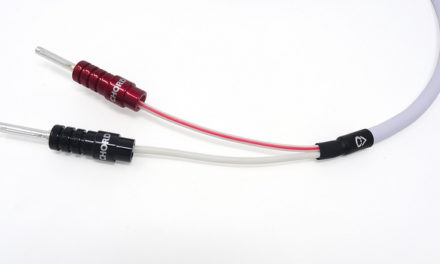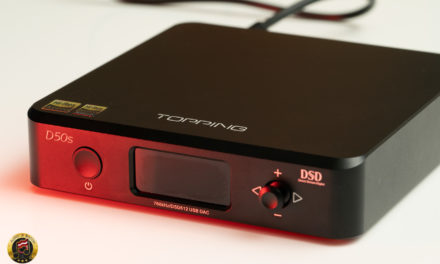The Variants
Contents
We will be comparing the OFE and SPTPC variants of their speaker cables and all three variants of their RCA and XLR interconnects. First, let’s take a look at how these cables measure.
One thing to note: Iconoclast actually measures each cable in a pair to ensure they’re matched pairs. I don’t know of any other cable company that does this.
Measurements
To keep the charts easier to on the eyes, I’ve averaged out the values within each pair. As you could see, independent of the type of copper used, they measured pretty damn close. Remember, the only difference is the actual wire.
From an objectivist’s point of view, these cables should theoretically sound the same – or at least very close. Then again, there are some who believe all cables sound the same regardless (lol).
As it turns out, after weeks of listening tests we’d have to agree with Galen (and many others) about the audible differences between these cables. And these differences weren’t subtle.

Iconoclast Speaker Cables
| Length (ft) | Cable Stock | Capacitance (pF/foot @ 1 kHz) | Inductance (uH/ft @ 1 kHz) | DC Resistance (ohm/M' SHLD/COND(s)) |
|---|---|---|---|---|
| 10 | Silver-Plated Tough-Pitch Copper (SPTPC) | 46.7 | 0.077 | 1.23 |
| 10 | Oxygen Free Electrolytic Copper (OFE) | 49.5 | 0.074 | 1.073 |
Iconoclast RCA 1X4 "Gen 2" Cables
| Length (ft) | Cable Stock | Capacitance (pF/foot @ 1 kHz) | Inductance (uH/ft @ 1 kHz) | DC Resistance (ohm/M' SHLD/COND(s)) |
|---|---|---|---|---|
| 5 | Oxygen-Free Electrolytic Copper (OFE) | 18.21 | 0.101 | 0.072 |
| 5 | Electrolytic Tough-Pitch Copper (ETPC) | 16.9 | 0.105 | 0.071 |
| 5 | Ultra-Pure Ohno Continuous Cast Copper (UPOCC) | 17.34 | 0.110 | 0.074 |
Iconoclast XLR 4X4 "Gen 2" Cables
| Length (ft) | Cable Stock | Capacitance (pF/foot @ 1 kHz) | Inductance (uH/ft @ 1 kHz) | DC Resistance (ohm/M' SHLD/COND(s)) |
|---|---|---|---|---|
| 5 | Oxygen-Free Electrolytic Copper (OFE) | 19.02 | 0.096 | 0.133 |
| 5 | Electrolytic Tough-Pitch Copper (ETPC) | 18.56 | 0.091 | 0.105 |
| 5 | Ultra-Pure Ohno Continuous Cast Copper (UPOCC) | 17.30 | 0.102 | 0.148 |













Why did you not include ETPC speaker cable??
I am receiving all 3 for evaluation this week and am curious if you deemed ETPC not competitive.
Thanks,
Good review Jay. Just curious, in addition to the DAVE, did you try balanced vs single-ended out of the Chord Hugo TT2? Have a preference?
Thanks,
Scott
Single ended seems to offer more clarity and air but balanced puts more meat and warmth on the bones.
Hi Jay,
I am especially interested in the Iconoclast 4×4 “Gen 2” XLR Cables.
You described the ETPC as “The top-end has wonderful vibrancy and sparkle”.
You described the OFE as “The treble is tame and doesn’t ring out as vividly as both the ETPC or UPOCC. I do feel the tonal accuracy to be better than the ETPC – but many will prefer the soundstage and sweeter highs of the ETPC.”.
I am a bit confused with your terminology: In my search to eliminate the small harshness I still perceive in the highs, I made many changes to my sound system over the years (replacing DAC, amplifier, speakers, cables, added Innuos music server).
Each changes brought improvements in clarifying/cleaning the highs, i.e. trying to get sweet natural non-overbearing highs.
In my vocabulary, sweet highs do not equate vibrant or sparkling highs: the last thing I want to do in to accentuate the highs.
In fact, to me, vibrant or sparkling highs better describe the digital harshness I keep hearing with DACs: this kind of excessive energy in the highs that causes listening fatigue over prolonged listening period.
So, given my vocabulary, it would seem to me that the OFE tamed treble would provide me with the sweet natural non-overbearing highs I am looking for versus the ETPC, i.e. the OFE seems like the best choice to reduce the digital harness in the highs (my DAC is a PS Audio Directstream Senior and the harness in the highs is heard mostly in Choral music).
Would you concur that in my situation, the OFE would be a better choice?